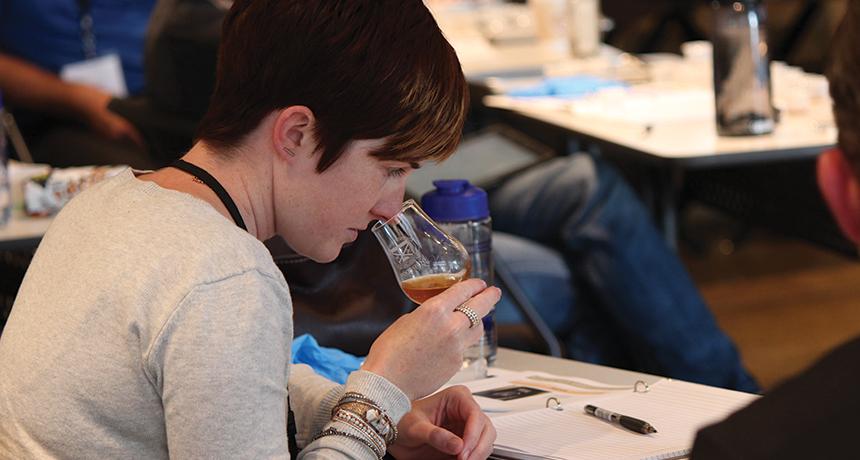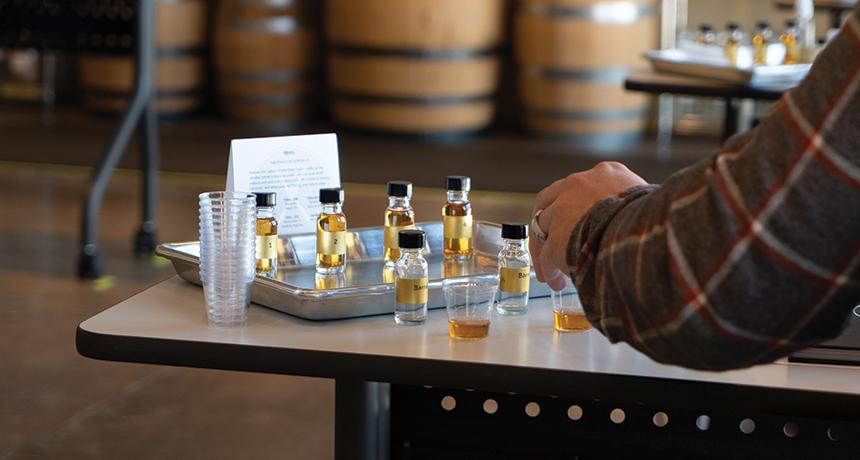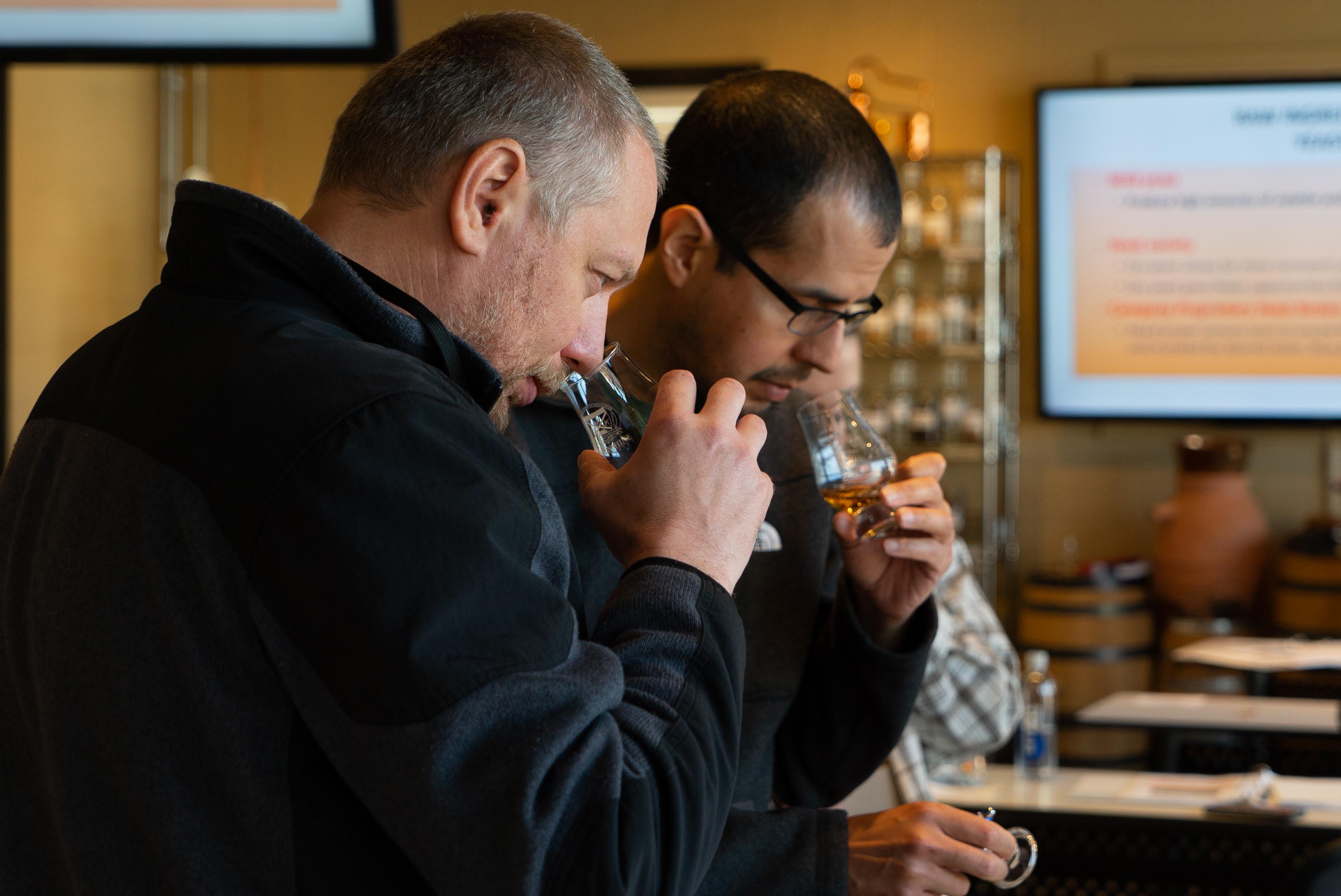
The Art of Non-Alcoholic Spirits
blog
For decades, spirits and cocktails have fostered a culture of craft, connection, and celebration. But over time, cocktail culture has evolved far beyond the buzz!

Written by Chris Zaborowski, Single Barrel Consultant & Whiskey Educator
One of our core beliefs at Westport Whiskey & Wine is that the best way to learn about a product is to taste it. We have promoted tastings since we opened over a dozen years ago and have devoted a significant amount of floor space to support that effort. If you're looking to plan a tasting event of your own, there are a few best practices you'll want to keep in mind to ensure everything goes smoothly.
Remember, the number one rule of any tasting-whether it be beer, wine, or spirits; virtual or in-person-your goal should always be to make the event as comfortable as it is informative. Here are some key points to keep in mind when planning and conducting a great tasting event:
It goes without saying, but planning a tasting event involves more than just gathering the right amount of glassware. Beyond considering the logistics for how many people you plan to host, you'll need to consider their expectations:
What is the knowledge base of your guests? And what are they hoping to gain from the tasting? A tasting planned for beginners new to a spirit will obviously need to be handled differently than one directed at seasoned industry professionals seeking something more advanced.
Knowing your audience can also help you answer questions about the products and materials you'll need, budget, and theme of the tasting event as you map out your approach-that brings us to number 2.
At this point you should have enough context for selecting a theme. Many tastings are done to demonstrate similarities and differences between products.

Using Bourbon as an example, you might build a theme around age, mash bill, flavoring grains, proof, region, small batch, single barrel, limited releases-you name it. Of course, you might also use a tasting to demonstrate a range of considerations, qualities, or brands.
The most important part about picking a theme is to choose something that caters to your audience and their expectations for the tasting event.
Pre-COVID, we would prepare the tasting room with comfortable seating, tasting mats organizing the products to be tasted, appropriate glassware, dump buckets, and a small bottle of water. Note sheets with pricing and a pen are also materials to consider.
The in-person set up under pandemic circumstances can be handled similarly, but with extra attention to social distancing, sanitation, and single-use materials. You should determine what your rules are as far as mask use and capacity, and you might consider supplying hand sanitizer to your guests.
If you're conducting your tasting virtually, you'll not only need to consider the logistics for participation, but also how your guests will obtain the products to be tasted. With virtual tastings, plan ample time to ensure participants will be able to secure the product to be tasted. You can either direct participants where they can find the products beforehand or-if your local laws allow it-you can choose to send the samples ahead via mail.

When doing Bourbon or whiskey tastings, we've had the best luck in using 50ml production branded bottles. With a wine tasting, 375mls are great. If you have to refill smaller sample bottles, ensure they are well sealed and packaged for shipping.
If you are using technology during your tasting event, then make sure you are prepped appropriately. Technological difficulties can interrupt even the best planned presentation. If there is a glitch that cannot quickly be recovered from, then let it go and just return to what was to be covered in a succinct and comfortable verbal presentation.
For example, if you attempt to recover the AV over several minutes, you risk guests taking liberty with oversampling and complicating their attention for the remainder of the event. Practice gathering your thoughts and regaining control so you are prepared for any scenario.
Of course, it also doesn't hurt to have a backup plan in place. If you are in-person, this might be as simple as providing print outs of your presentation to guests. This becomes more difficult with a virtual tasting, but at the very least you'll want to test out your technology so you can become familiar with any issues in advance.
You should also consider emailing guests some tasting notes, your agenda, and a copy of the presentation-both to keep your participants focused as they follow along and also as a backup should technological issues arise.
Any successful tasting event requires dialogue between presenter and participants. Not only does dialogue build confidence that both parties are in for a great experience, but from the presenter's viewpoint, it also helps to gauge the knowledge level of the participants so the experience can be shaped accordingly.
If the audience is composed of newbies to the category, then plan for a simpler "remember these key points" type of presentation. If they are made up of "so-called experts," then plan on exploring ways to push their knowledge base further during the presentation.
Asking questions and debunking misconceptions is a great way to ensure that everyone-even those that consider themselves experts-will walk away having learned something new. Sticking to our original example, you might ask a group of more experienced participants, "What constitutes a Bourbon?" The most popular item to debunk is that all Bourbon does not come from Kentucky (though most of it is made here); this can lead to a larger conversation on the history of Bourbon, how it has been defined by the Bottled-in-Bond Act through the Taft Act, all the way to when Bourbon was legally defined in the mid-1960s as America's native spirit.
Asking the crowd questions engages participation which, of course, increases retention; however, be aware that sometime around the third taste, your audience's attention may start to drift.
At this point, I like to include a reminder of how a tasting can loosen one's tongue and invite participants to sip some water before we begin the next taste and/or topic-and in fact, water should be encouraged between tastings. Not only does this reminder regain some level of attention, but it reaffirms that there is still more ground to cover.
Even though tasting is something we all do every day, you'll want to provide your participants a little direction to keep them focused and mindful of their experience throughout the tasting.
So long as you follow these tips, encourage participation, and repeat and reinforce key takeaways, your tasting is sure to be as enjoyable as it is informative.
Interested in advancing your knowledge of distilling and the spirits industry? Check out Moonshine University's upcoming courses to learn from the best in the business.
Written by Chris Zaborowski, Single-Barrel Consultant & Whiskey Educator; Executive Bourbon Steward.
Related Content
Scent Memories Vs. The Communal Lexicon: Bringing Objectivity Into Sensory
11 Questions With Barrel Aging Experts, Andrew Wiehebrink & Gregg Snyder

blog
For decades, spirits and cocktails have fostered a culture of craft, connection, and celebration. But over time, cocktail culture has evolved far beyond the buzz!

blog
Those that are familiar with the process of crafting distilled spirits may also be familiar with the 10 common congeners that are created during fermentation, and honed during the distillation run. Each congener has its own distinct personality, rendering unique tastes and aromas to the finished spirit.

blog
So, you want to start distilling with freshly milled grain. Maybe you're tired of paying top dollar for the pre-milled stuff from the malt distributor, and you're ready to invest in the quality, efficiency, and bulk pricing that comes with milling your own whole grain. But where do you start?